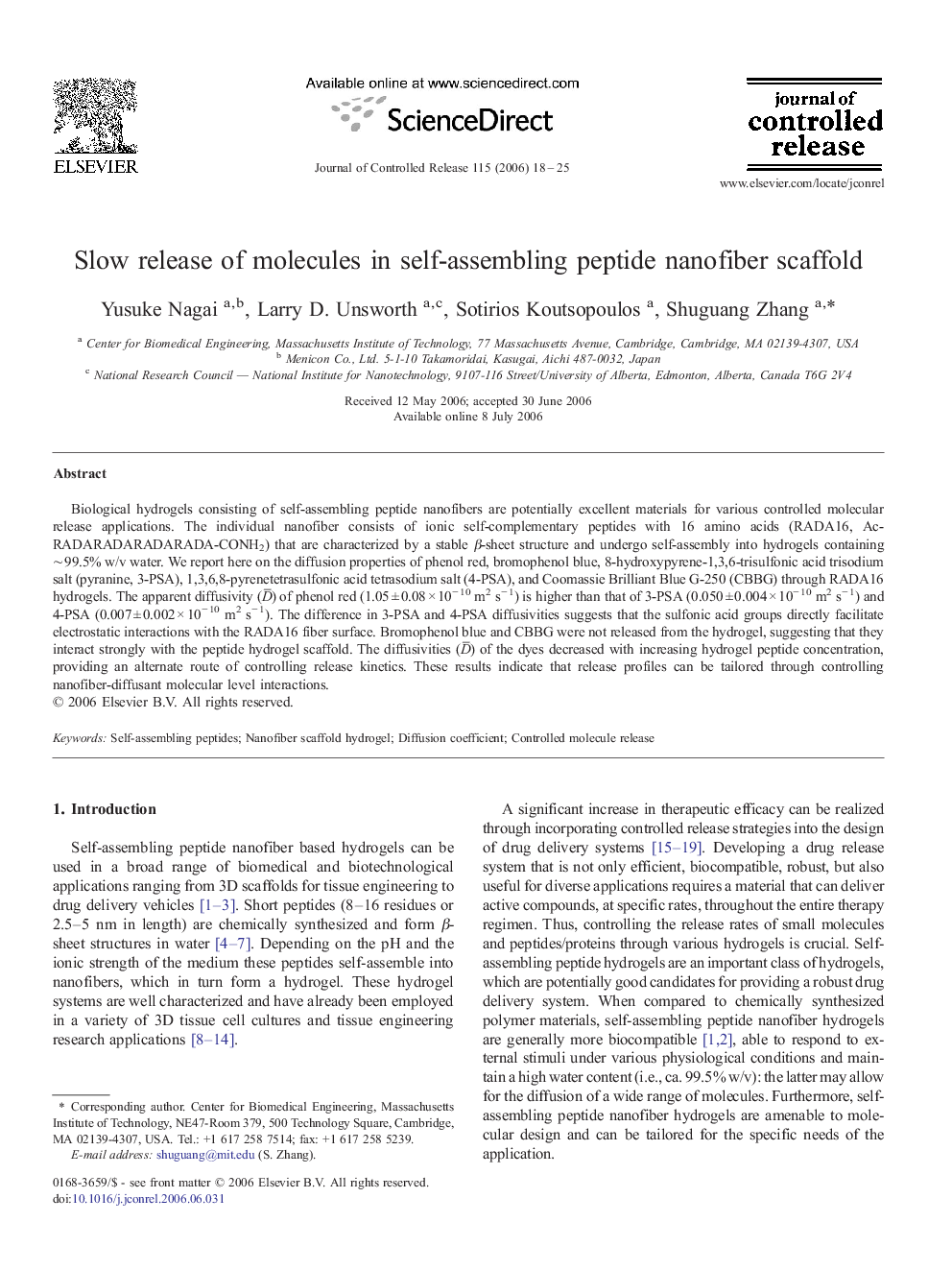| کد مقاله | کد نشریه | سال انتشار | مقاله انگلیسی | نسخه تمام متن |
|---|---|---|---|---|
| 1427607 | 986871 | 2006 | 8 صفحه PDF | دانلود رایگان |

Biological hydrogels consisting of self-assembling peptide nanofibers are potentially excellent materials for various controlled molecular release applications. The individual nanofiber consists of ionic self-complementary peptides with 16 amino acids (RADA16, Ac-RADARADARADARADA-CONH2) that are characterized by a stable β-sheet structure and undergo self-assembly into hydrogels containing ∼ 99.5% w/v water. We report here on the diffusion properties of phenol red, bromophenol blue, 8-hydroxypyrene-1,3,6-trisulfonic acid trisodium salt (pyranine, 3-PSA), 1,3,6,8-pyrenetetrasulfonic acid tetrasodium salt (4-PSA), and Coomassie Brilliant Blue G-250 (CBBG) through RADA16 hydrogels. The apparent diffusivity (D¯) of phenol red (1.05 ± 0.08 × 10− 10 m2 s− 1) is higher than that of 3-PSA (0.050 ± 0.004 × 10− 10 m2 s− 1) and 4-PSA (0.007 ± 0.002 × 10− 10 m2 s− 1). The difference in 3-PSA and 4-PSA diffusivities suggests that the sulfonic acid groups directly facilitate electrostatic interactions with the RADA16 fiber surface. Bromophenol blue and CBBG were not released from the hydrogel, suggesting that they interact strongly with the peptide hydrogel scaffold. The diffusivities (D¯) of the dyes decreased with increasing hydrogel peptide concentration, providing an alternate route of controlling release kinetics. These results indicate that release profiles can be tailored through controlling nanofiber-diffusant molecular level interactions.
Journal: Journal of Controlled Release - Volume 115, Issue 1, 28 September 2006, Pages 18–25